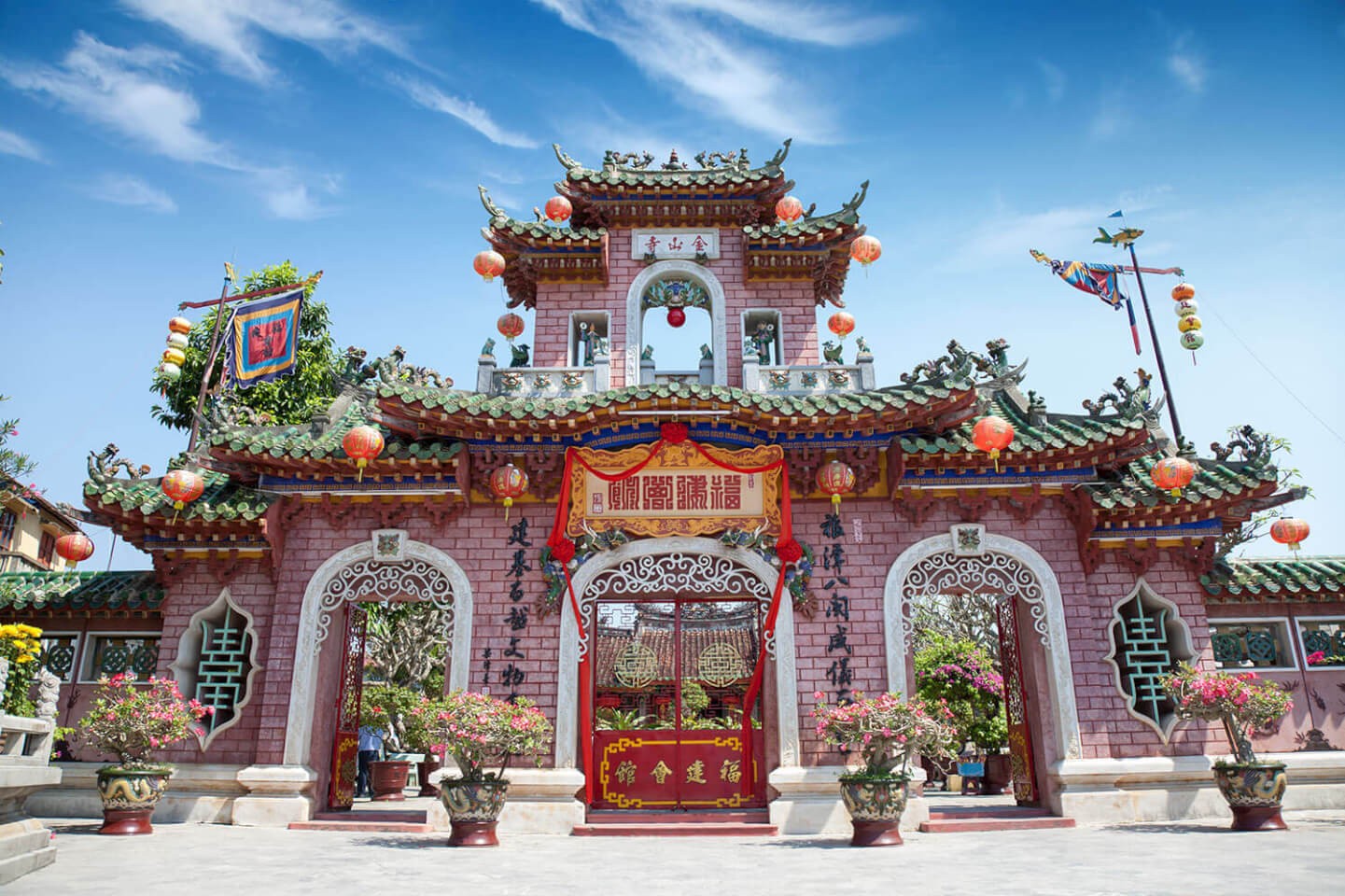Cau Pagoda
1. Overview
Chùa Cầu, or the Japanese Covered Bridge, is one of the most iconic landmarks in Hội An Ancient Town, Quảng Nam Province. Built in the 17th century by the Japanese community, the bridge is a unique fusion of architecture, history, and spiritual significance. Though often referred to as a “bridge,” it also houses a small temple—hence the name “Chùa” (Pagoda) Cầu (Bridge). As a symbol of Hội An, it represents centuries of cultural exchange, harmony, and beauty.
2. Location
Chùa Cầu is located in the heart of Hội An Ancient Town, connecting Trần Phú Street with Nguyễn Thị Minh Khai Street across a small canal of the Thu Bồn River system.
Its central location makes it easily accessible on foot, and it is often the first stop for visitors exploring Hội An’s UNESCO World Heritage Site.
3. Architecture and Features
Chùa Cầu stands out for its distinctive and harmonious blend of Japanese, Chinese, and Vietnamese architectural styles:
-
The bridge is about 18 meters long, made of wood with a curved tiled roof, supported by stone piers.
-
The exterior is decorated with wooden carvings of animals and spiritual symbols, while the interior has lanterns and a simple altar.
-
At the center of the bridge is a small temple dedicated to Bắc Đế Trấn Võ, the Taoist God of Weather and Protection, worshipped by sailors and merchants.
-
Monkey and dog statues guard each end of the bridge, symbolizing the years the construction began and ended, or according to legend, as protectors of the structure.
The bridge is especially enchanting when lit up at night, reflecting its image on the calm canal below.
4. Historical Significance
Chùa Cầu was constructed around the early 1600s by the Japanese trading community living in Hội An at the time. It was built not only to link the two districts of the town but also to promote spiritual peace and to "pin down" a mythical sea monster (Namazu) said to cause earthquakes in the region.
Over time, the bridge has become more than just a crossing—it has become a symbol of Hội An’s multicultural past, where Japanese, Chinese, and Vietnamese influences coexisted in harmony.
Although it is referred to as a "pagoda," the structure is not a Buddhist temple in the traditional sense but rather a spiritual monument and cultural heritage site.
5. How to Visit
-
Admission: Chùa Cầu can be visited with the general entrance ticket to Hội An Ancient Town (required to access heritage sites within the town).
-
It is open daily and accessible on foot, especially ideal for early morning or evening walks.
-
As it is a sacred site, visitors are advised to dress modestly and behave respectfully, even though there are no monks or religious ceremonies held there.
Photography is allowed, and the site is extremely popular—so visiting during quieter hours is recommended.
6. Experience and Meaning
Standing on Chùa Cầu is like standing on a piece of living history. It offers a peaceful moment amid the bustling ancient town, and the calm water below adds to the sense of reflection.
More than just a physical bridge, Chùa Cầu is a cultural bridge—linking past and present, East and West, spiritual and secular. For locals, it is a source of pride and identity. For visitors, it is a chance to connect with centuries of shared heritage in one of Vietnam’s most magical towns.


